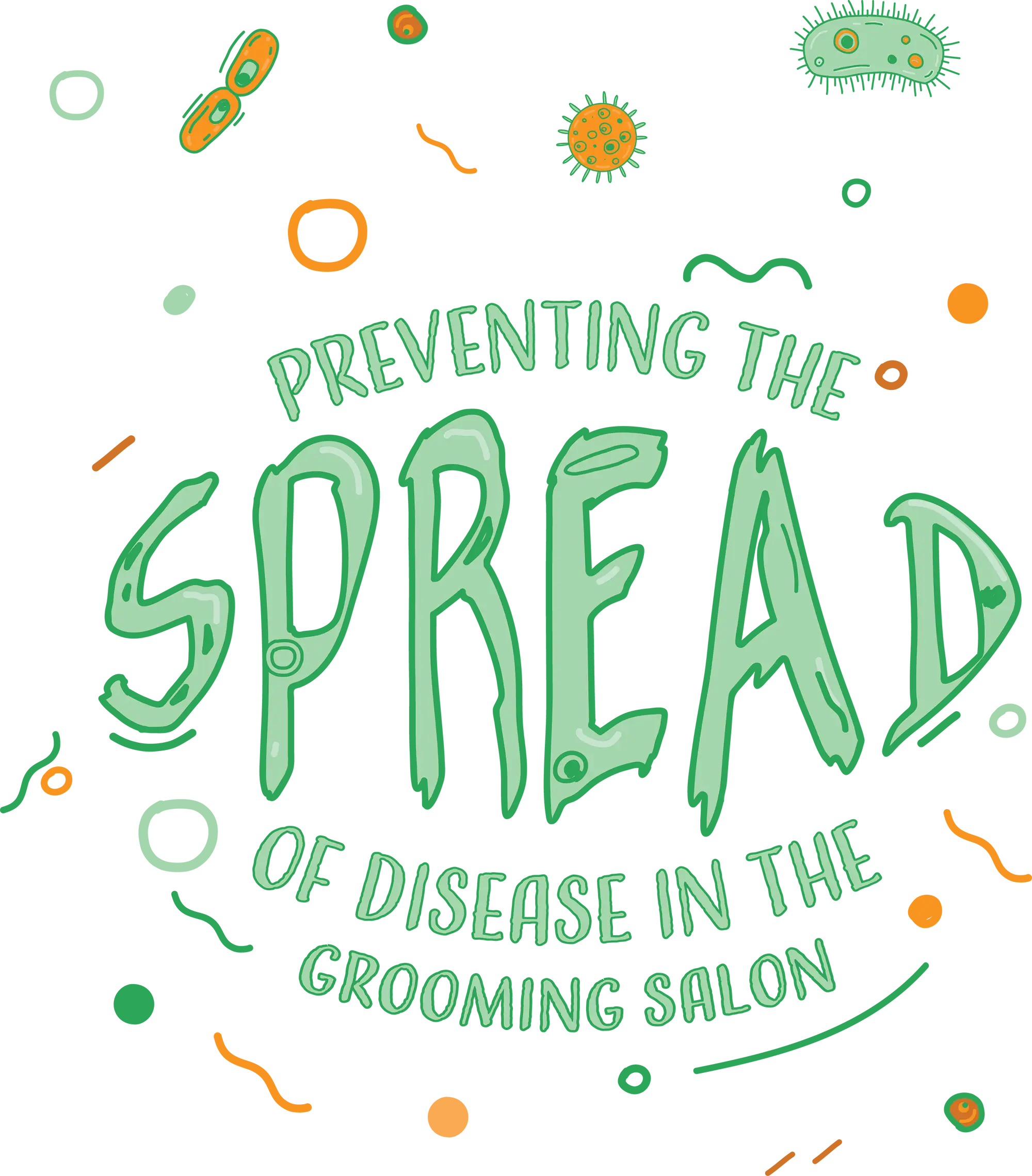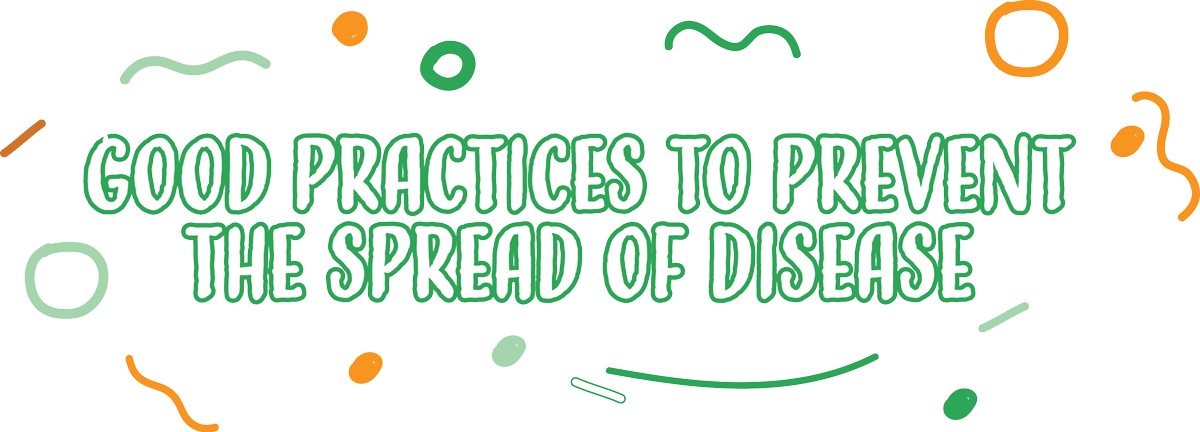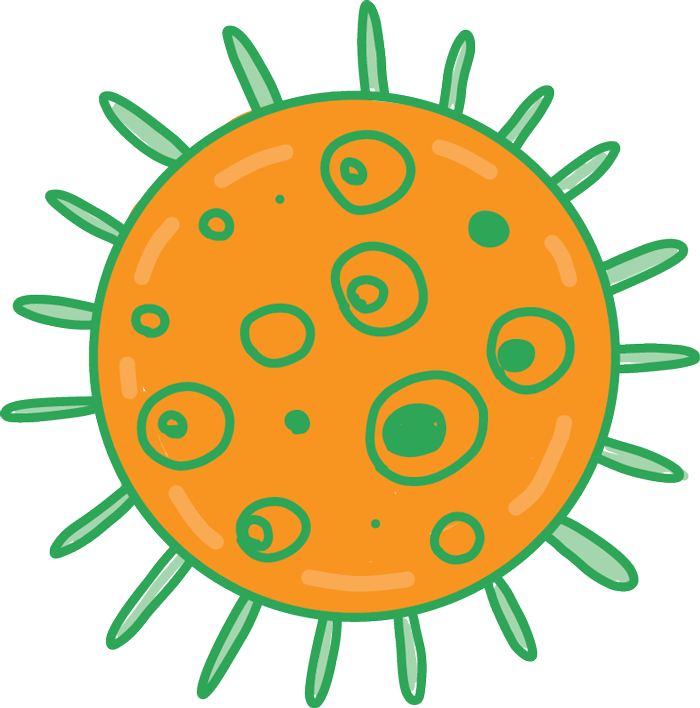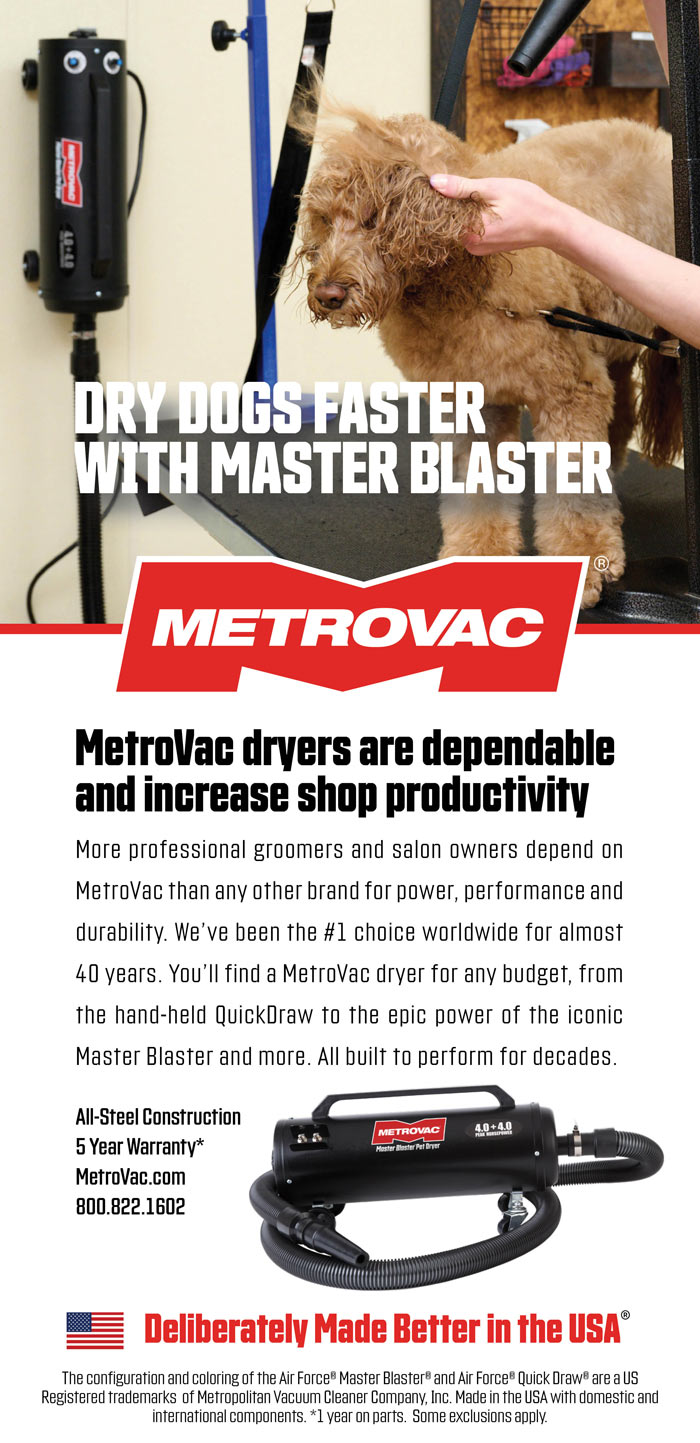
 ne of the most critical areas of training in veterinary medicine is controlling the spread of disease. We are regularly exposed to highly contagious and highly infectious diseases, so we must constantly be aware of procedures and protocols for ourselves, our staff, our clients and their animals. This is not only a concern for pets spreading disease amongst themselves; many of the things we encounter are zoonotic.
ne of the most critical areas of training in veterinary medicine is controlling the spread of disease. We are regularly exposed to highly contagious and highly infectious diseases, so we must constantly be aware of procedures and protocols for ourselves, our staff, our clients and their animals. This is not only a concern for pets spreading disease amongst themselves; many of the things we encounter are zoonotic.
It is scary to think about, but groomers and their staff also have high exposure to many of these same diseases/infections. Have you thought about your risk? Do you have protocols, protective gear and the right products to kill these nasty bugs effectively?







When discussing this, I often change hats from veterinarian to pet owner to business owner to father. There are so many different aspects that can be an issue. None of us want to be responsible for spreading diseases among our clients’ animals, but think about if one of your staff got seriously ill. Consider your concern for their wellbeing, the loss of work, the lawsuit, or even a life-altering event or death. Now, think about if you took it home and it was your child. It was never worth the risk to me, so learning to avoid it and taking precautions was always a high priority.

One of the best starting places to prevent the spread or exposure of these diseases is to require yearly/routine veterinary visits and vaccinations. Having vaccinations is vital to prevent disease, but requiring vaccines is essential because it guarantees regular veterinary checks. It is always good to encourage or, better yet, require routine fecal tests. This will help rule out the common parasites, therefore preventing the spread in the pets, as well as in everyone that handles the pet both directly and indirectly.



Many owners, even though they may know their pet deals with ear infections, are often not great at following through with the medicine and following up with the veterinarian to ensure the infection is gone before they quit treatment. We commonly clean ears bare-handed or sometimes spray them with our hose, which can aerosolize the bacteria/fungus, making our eyes, ears, nose and mouth all vulnerable. Do you wear eye, ear, nose and mouth protection? If not, maybe you should consider it before you clean the next set of ears. Most shampoos are not disinfectants, so don’t feel you are safe by using shampoo in this process. They are designed to clean, not disinfect.
The anal area is no different than ears. Fecal material is about 90% bacteria, so washing and working in the area is high risk. It is often a higher risk if the owners are feeding diets that may need better quality control or are raw because they stand the chance of having more fecal contamination that was not adequately controlled in food processing. Salmonella, E. coli, Campylobacter and Listeria are some common ones found in reports (including ones from the FDA). All are fecal contaminants from the processing of the meat in the diet. The good news is that by wearing protective gear and following suitable cleaning/disinfecting protocols, these can be easily controlled.
Dr. Cliff Faver graduated with a BS in Biology/BA in Chemistry before getting a Veterinary degree in 1987. He is the past owner of Animal Health Services in Cave Creek, Arizona and now the US distributor for Iv San Bernard products, teaches the ISB Pet Aesthetician Certification program, and speaks internationally on hair and skin. His passion is to merge groomers and veterinarians to aid in helping and healing pets. He is also a member of AVMA, AAHA, AZVMA, Board member with Burbank Kennel Club, and has served on Novartis Lead Committee, Hill’s International Global Veterinary Board, and a Veterinary Management Group.


